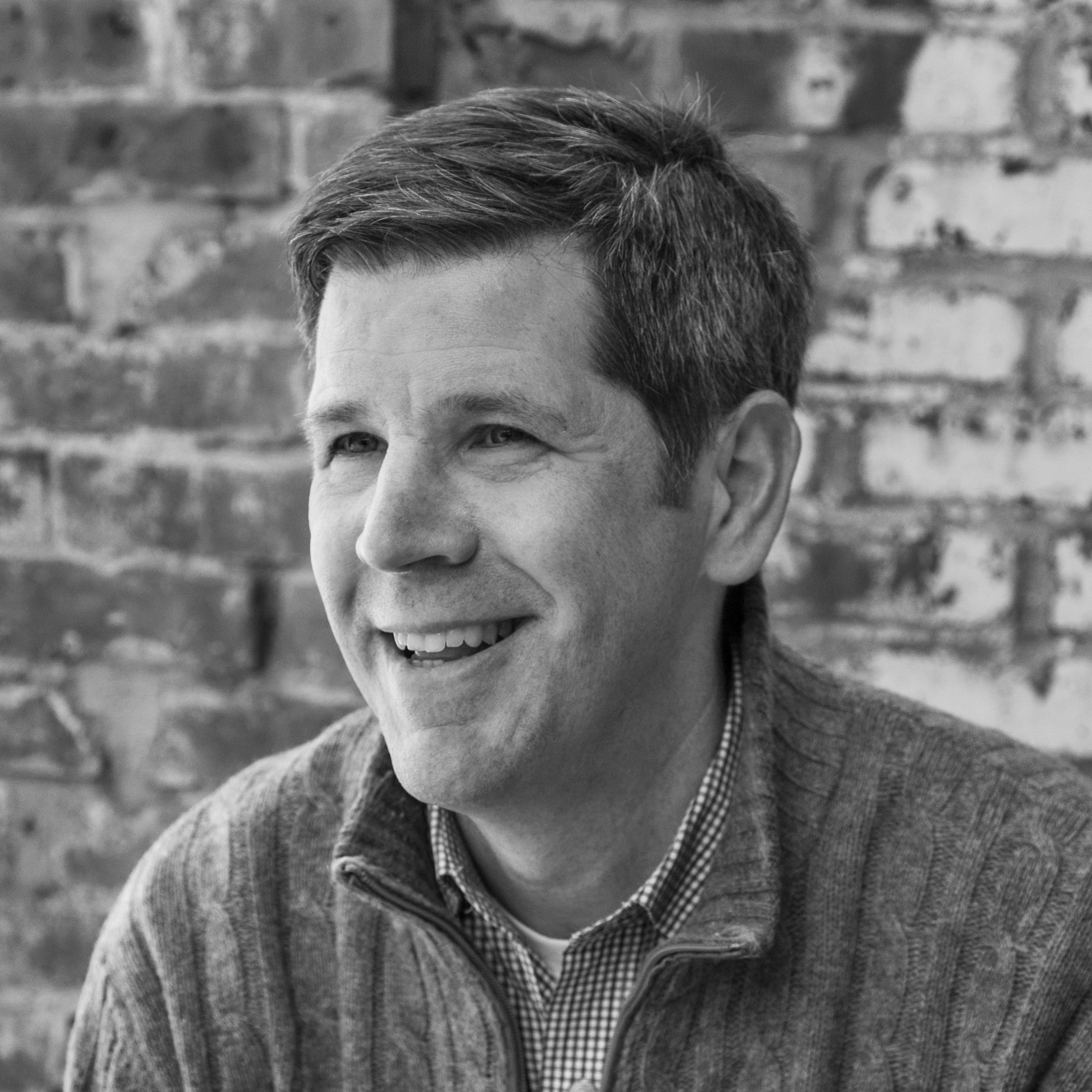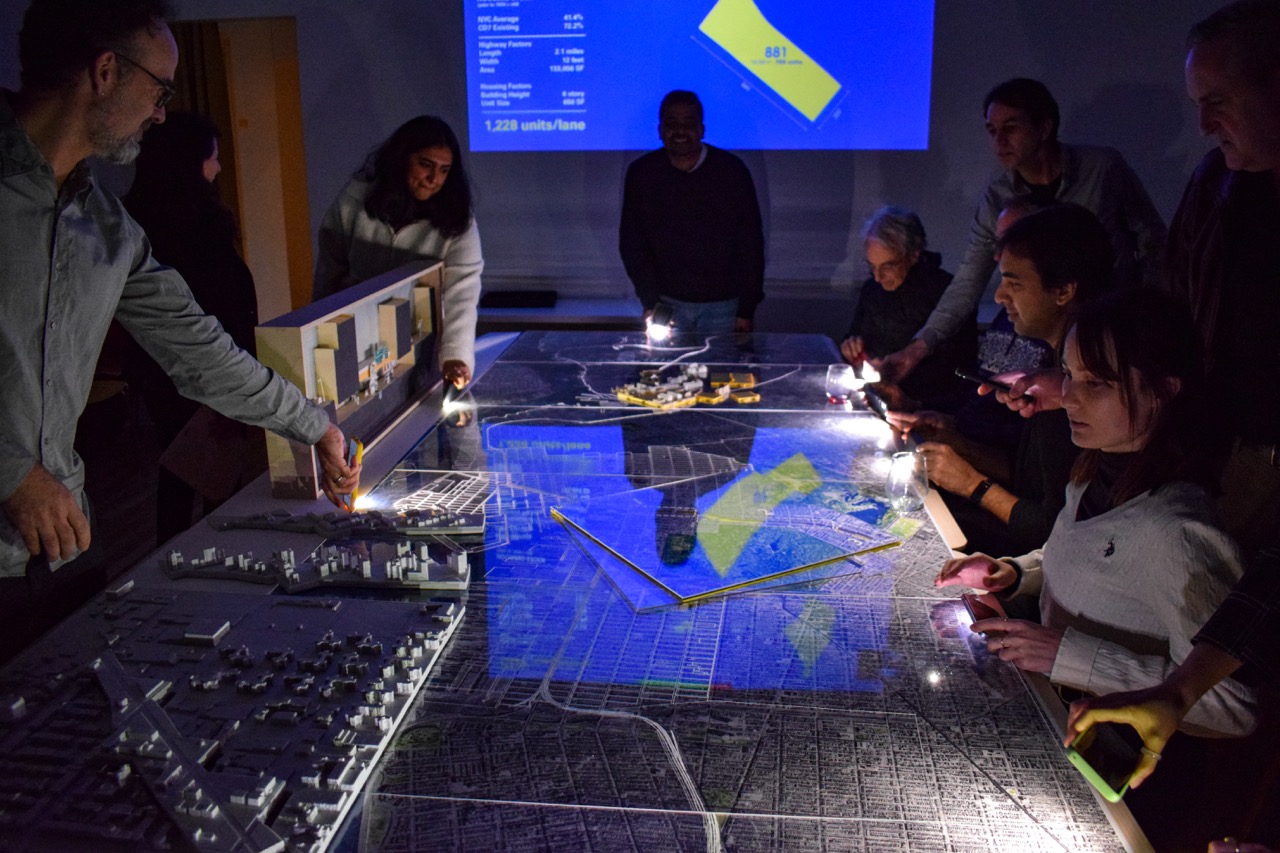The Prospect Trace: Cultivating Civic Life on NY-27
Community Board 7Severn Clay-Youman, David Cunningham
2022 Fall Fellowship
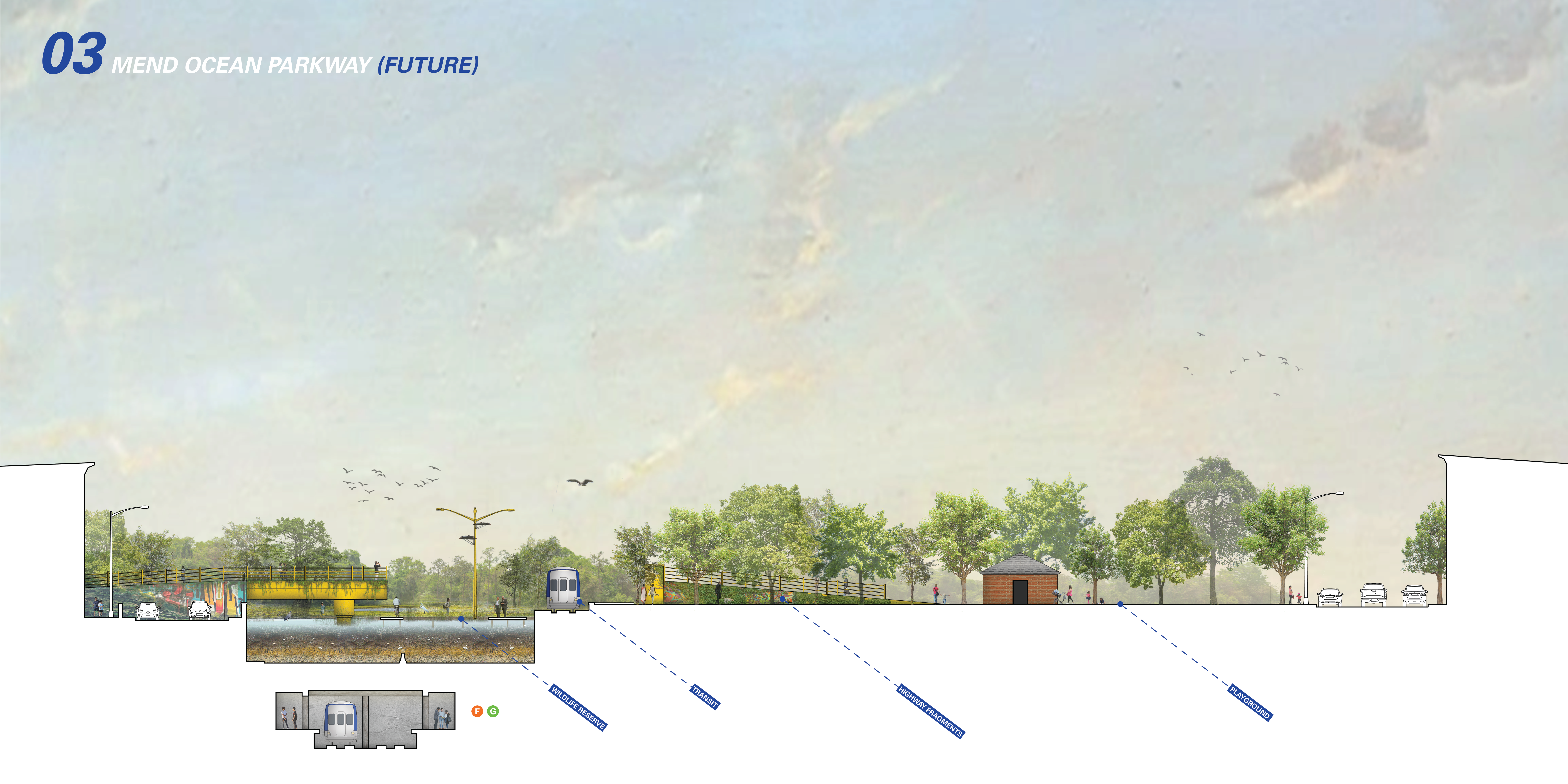
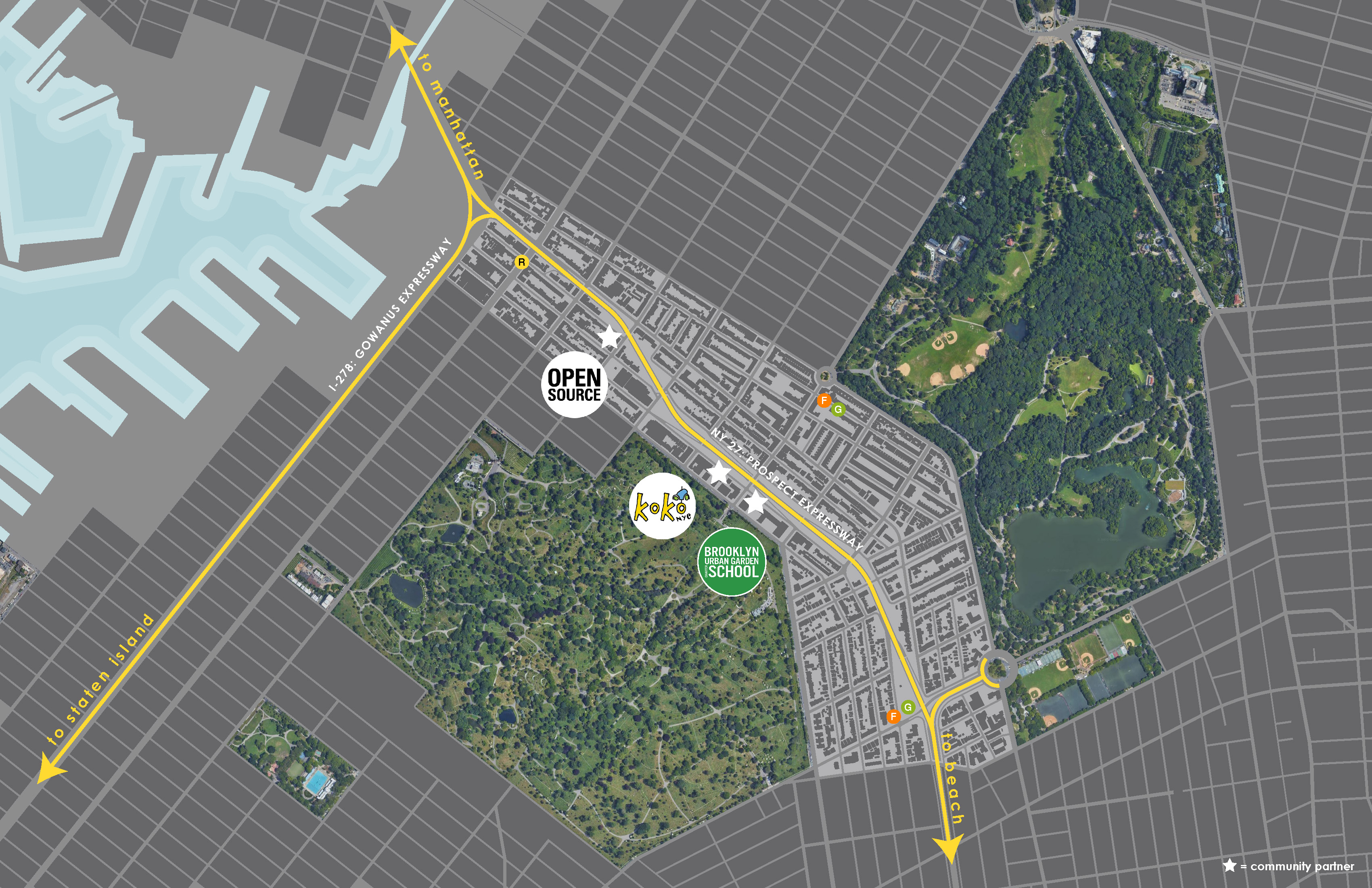
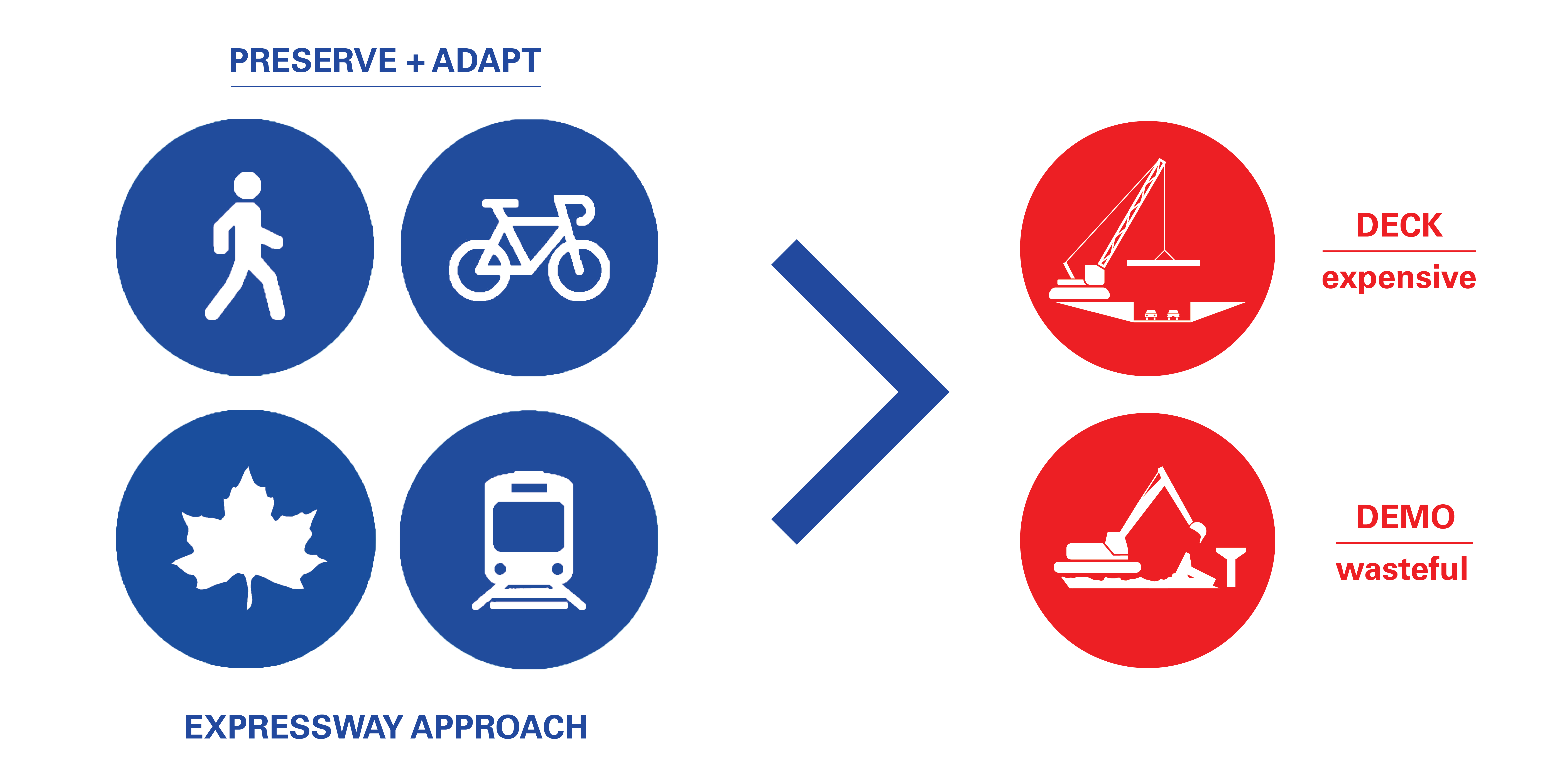
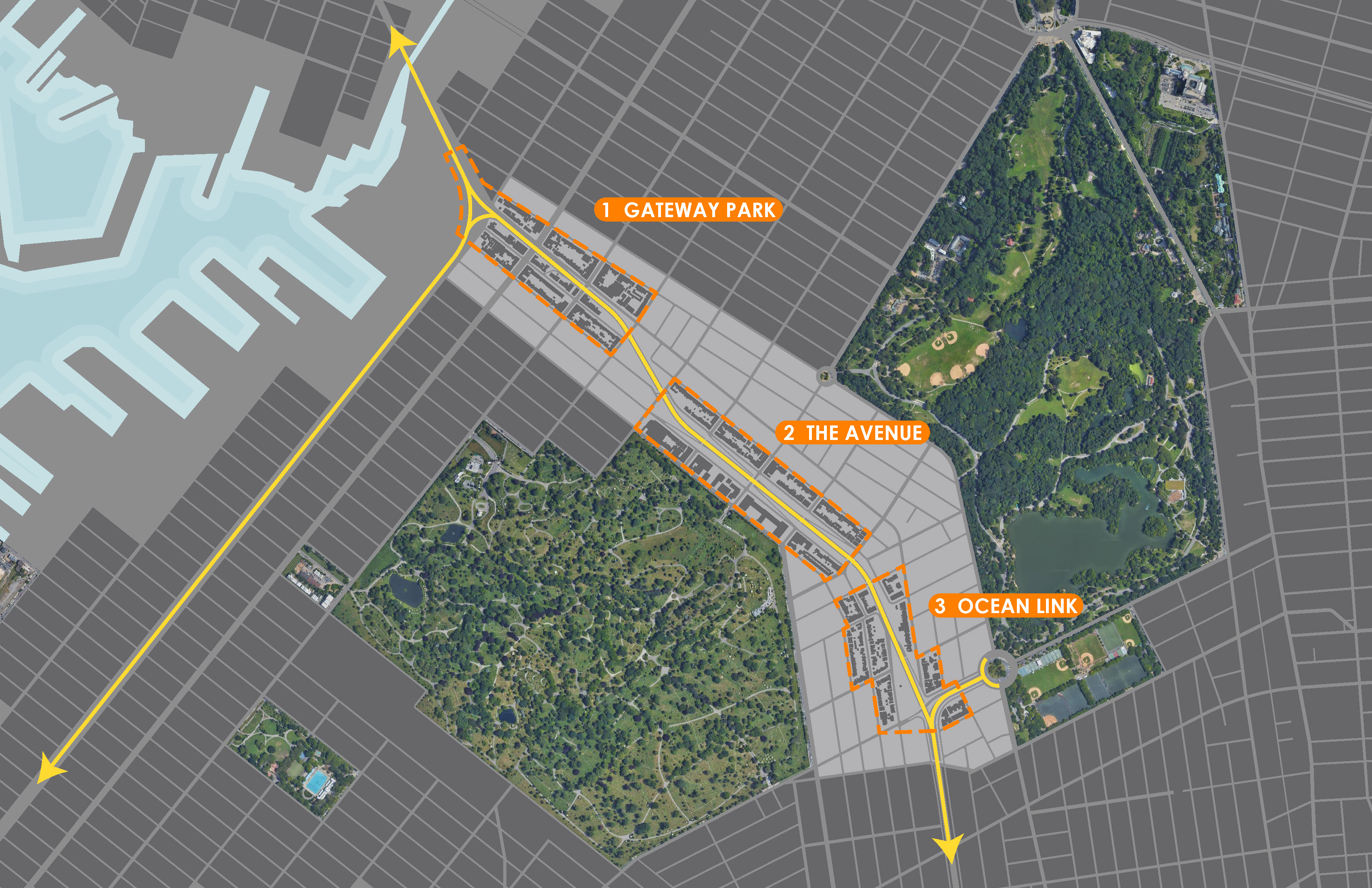
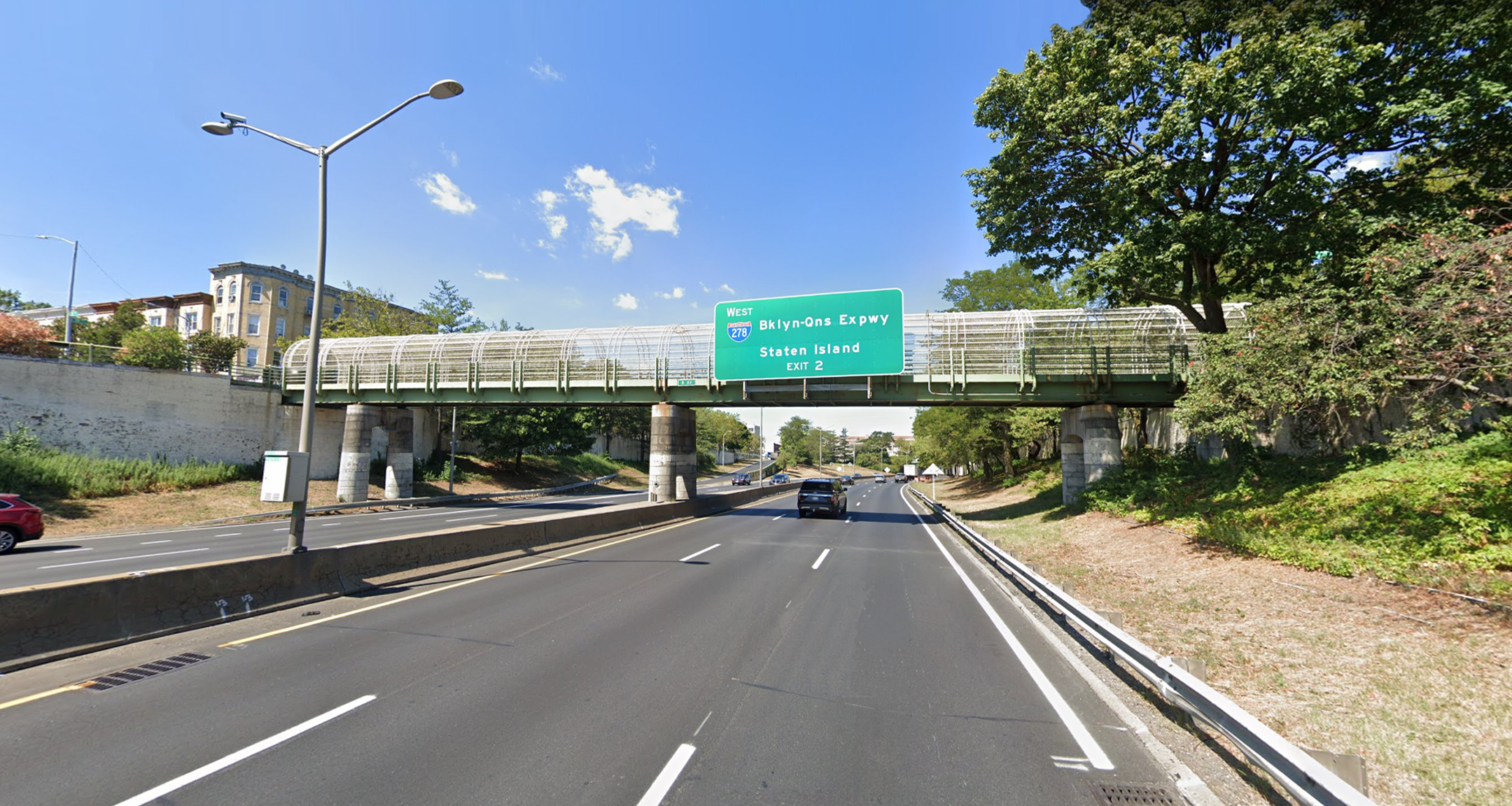



How should an artery cross a city? When it was completed in 1962, the Prospect Expressway cut a two-hundred-foot-wide swath through the glacial ridge that forms the backbone of Brooklyn. Once embraced with optimism, urban highways are now more often seen as wounds inflicted upon their surrounding neighborhoods. To address this predicament, municipalities around the world are dismantling or covering their highways. The Prospect Expressway is the culmination of nearly a century of innovation in travel that began with the design of Eastern and Ocean Parkways in 1874 by Olmsted and Vaux with Prospect Park situated at the heart of their network. The expressway is the offspring of decades of effort by officials, engineers and contractors to corral earth, stone and steel into a symphony of circulation.
Given this extraordinary investment of materials, labor and energy, we believe the expressway is too valuable to destroy and too fascinating to bury. Instead, we propose to refashion the highway as part of the ordinary tissue of the city. For this undertaking, we have drawn inspiration from the traditional techniques of kintsugi and darning. In kintsugi, damaged pottery is repaired with a new, contrasting substance which draws attention to the history of the object and its transformation over time. Darning is a similar craft for mending holes or worn areas in fabric employing a simple stitch which typically contrasts with the underlying pattern of the material. Our goal is to transform a noisy, dangerous and polluted utilitarian corridor that is strictly vehicular into a welcoming civic place where people, plants and transportation are orchestrated in harmony.
To celebrate the transformation of the Prospect Expressway, we propose to rechristen this route as a trace. During our investigation of State Route 27, we have discovered much about the expressway’s evolution by tracing its history. As the highway evolves into civic infrastructure in the future, it will retain marks or indications, traces, of its past existence. As the highway fades and blurs into daily neighborhood patterns and routines, it is our hope that the route acquires a new identity as an energetic and venerated informal road
– The Prospect Trace.
Given this extraordinary investment of materials, labor and energy, we believe the expressway is too valuable to destroy and too fascinating to bury. Instead, we propose to refashion the highway as part of the ordinary tissue of the city. For this undertaking, we have drawn inspiration from the traditional techniques of kintsugi and darning. In kintsugi, damaged pottery is repaired with a new, contrasting substance which draws attention to the history of the object and its transformation over time. Darning is a similar craft for mending holes or worn areas in fabric employing a simple stitch which typically contrasts with the underlying pattern of the material. Our goal is to transform a noisy, dangerous and polluted utilitarian corridor that is strictly vehicular into a welcoming civic place where people, plants and transportation are orchestrated in harmony.
To celebrate the transformation of the Prospect Expressway, we propose to rechristen this route as a trace. During our investigation of State Route 27, we have discovered much about the expressway’s evolution by tracing its history. As the highway evolves into civic infrastructure in the future, it will retain marks or indications, traces, of its past existence. As the highway fades and blurs into daily neighborhood patterns and routines, it is our hope that the route acquires a new identity as an energetic and venerated informal road
– The Prospect Trace.

